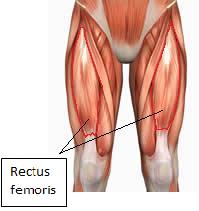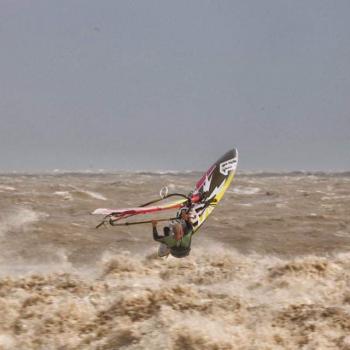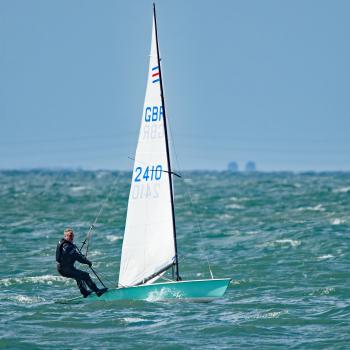This article, by an expert in Sports Medicine, describes the symptoms, diagnosis, and treatment of common injuries to the thigh. This will be of help to anyone suffering from a sprain or tear to their thigh muscle who would like to know what the recovery involves.
Contents
- Introduction
- Diagnosing an injury to the rectus femoris muscle
- Treatment and rehabilitation for injuries to the rectus femoris muscle
- Recovering from a rectus femoris muscle injury
- Preventing rectus femoris muscle injuries
Introduction
The rectus femoris muscle is one of four quadriceps muscles at the front of the thigh and attaches to the pelvis and just below the knee. It is responsible for extending the knee and flexing the hip. It is composed of fibres that are appropriate for rapid, forceful activity. This muscle is particularly vulnerable to eccentric stress forces and injures caused by forceful movements such as when starting to sprint or kicking a ball.

Diagnosing an injury to the rectus femoris muscle
When the rectus femoris is strained or tears, pain will immediately be felt at the top of the thigh, and in extreme cases there is a noticeable defect when the muscle is completely torn. Fortunately complete tears are rare. An MRI scan is normally requested to determine the extent of the injury.
Treatment and rehabilitation for injuries to the rectus femoris muscle
For injuries to the rectus femoris muscle it is important to immediately apply the RICE principle (Rest, Ice, Compression and Elevation) to the thigh. I often use a “Myotrain” Brace from Bauerfeind, which provides cryotherapy and compression. The aim of this treatment is to reduce bleeding and damage within the muscle, which is an important part of the healing process. In addition, it helps to make the sufferer more comfortable immediately after the injury. Depending on how much pain is being experienced simple pain killers such as Paracetamol may be used, although it is best to try to avoid non- steroidal anti-inflammatory drugs.
Once the swelling has gone down, and movement has been restored enough to allow to you to move around with a normal gait and range of motion, then you will have recovered from the acute phase of the injury. Now is a good time to exercise the quadriceps muscles, however, without inflicting additional damage or stress. This can be on an exercise bike or swimming, which is exercise where the body is supported and the weight is kept off the limb.
Recovering from a rectus femoris muscle injury
From here gentle resistance exercises and thigh stretching is important, as this helps to align the scar tissue that has formed during the healing process. By aligning the scar tissue along the normal lines of stress the tensile strength of the thigh muscle is increased. Finally, core strength and stability exercises can improve muscle function across the trunk and pelvis, which can help reduce the risk of re-injury. Recovery must be closely monitored, so that improvements can be noted and the programme altered to aid the recovery process.
It is difficult to estimate the length of time to full recovery. Some people will be performing normally within one to four weeks, but occasionally it can take six to eigh weeks or more; this rehabilitation depends on the extent of the injury, your health and any underlying medical conditions.
Preventing rectus femoris muscle injuries
Warming up properly prior to engaging in sport is thought to decrease muscle stretch injuries because the muscles are more extensible when the tissue temperature has been increased by a few degrees above normal. A good warm up should last at least twenty minutes, starting at a gentle pace before increasing to full activity.
Some sportsmen and women use compression shorts which can help maintain the temperature of the muscle tissue. Leg supports can also help to retain muscle temperature and some are specifically designed to support the quadriceps muscles.
Similarly to the practice of warming up, a cooling-down period must also be encouraged as this can help with the transportation of waste materials from muscles and helps with preventing injury or re-injury.
A rectus femoris injury should not be rushed, as people who return to sport too early often suffer re-injury to the muscle. Finally, a quick accurate diagnosis and appropriate treatment is the key to full recovery.












